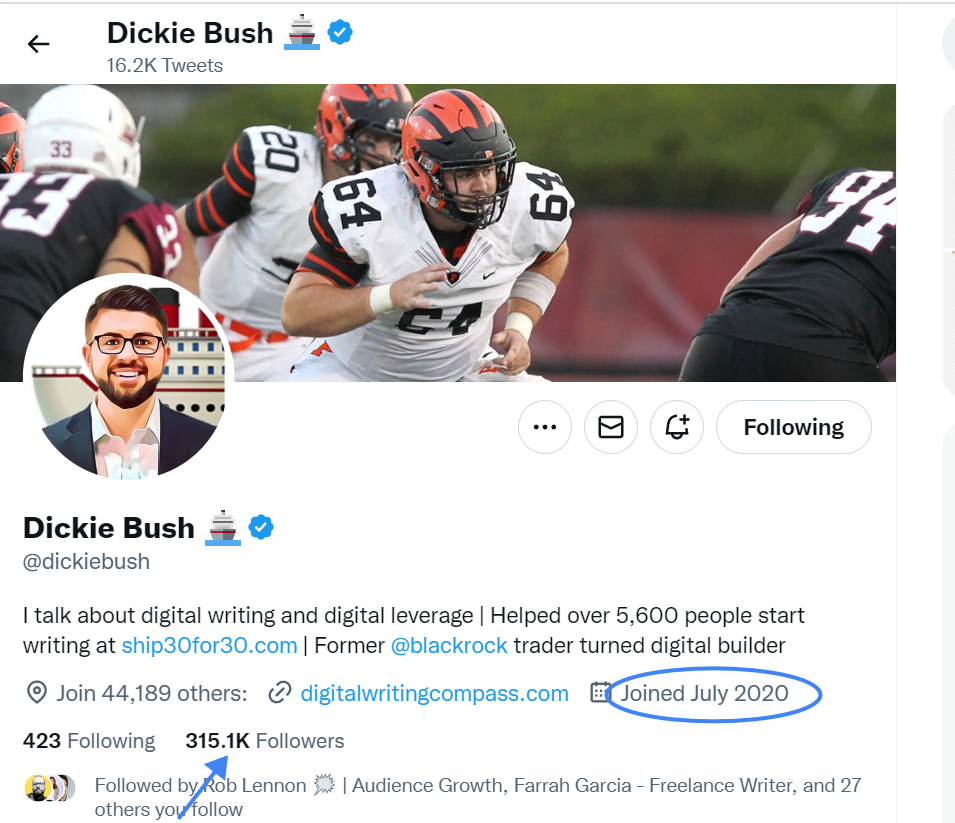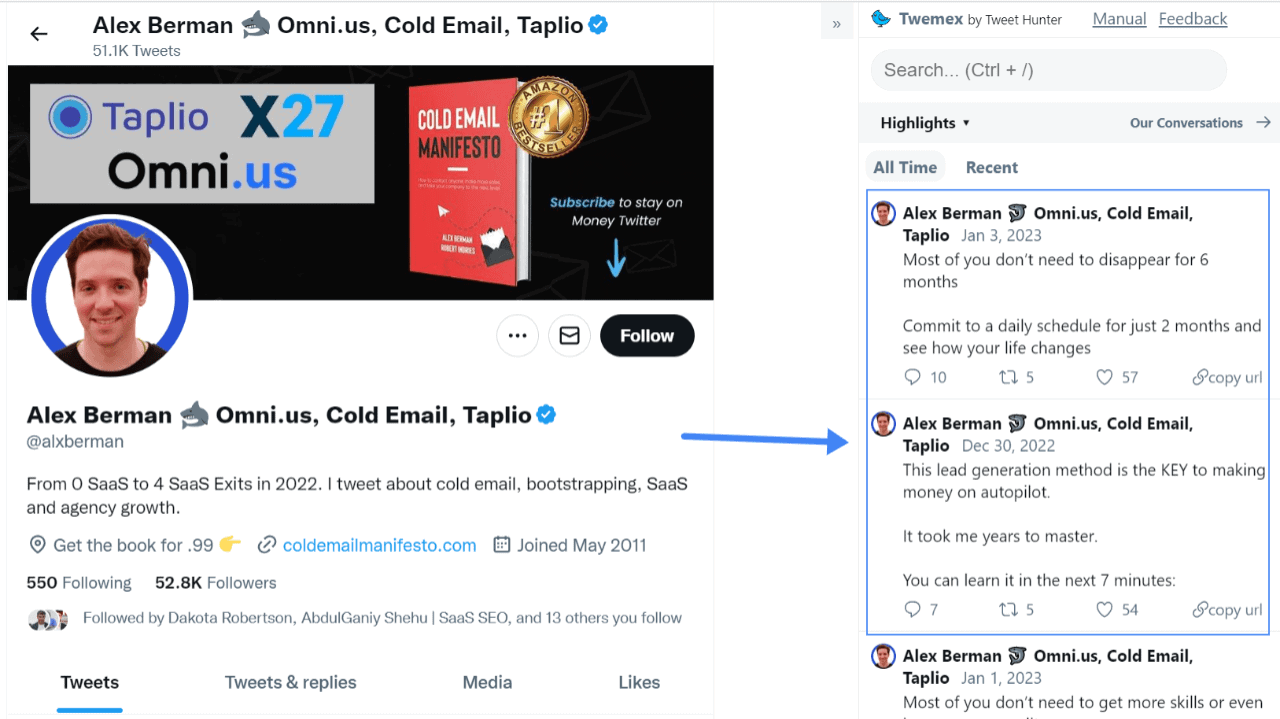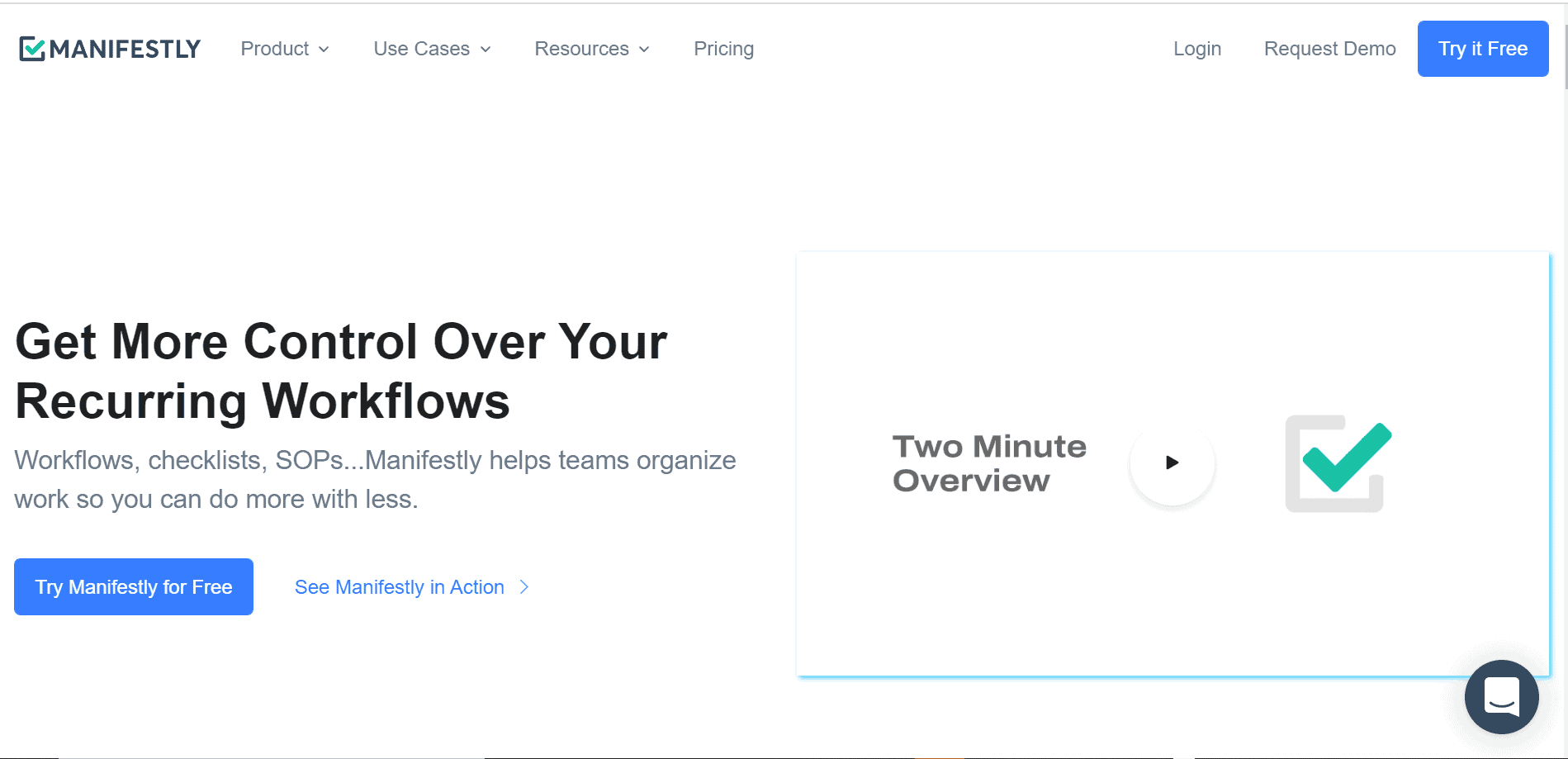Lately, we’ve seen fast growth on some social media accounts. From Dickie bush hitting 351k Twitter followers in 2 years to Mike Walterz adding 100k Instagram followers within 5 – 7 months.

[Source: Twitter]
These numbers prove that you don’t need to be a famous person to grow a large social media following.
Now, you may be wondering.
- Why are some people able to post all year consistently while others struggle to maintain a one-post/week cadence?
- Why do some people consistently create high-quality content where a majority have embraced mediocrity?
- Why can some accounts effortlessly add thousands of monthly followers while others remain stuck to their previous numbers?
It turns out that growing on social media requires some set of practices. Even better, those practices have to be streamlined so that they’re repeatable and sustainable over a long period.
And the key to that sustainable system is a workflow.
After researching, we’ve discovered “those” practices that make up the workflow of some of the fastest-growing accounts on social media.
These practices have been put into test by several creators who want similar results, and they share success stories.
Before we reveal these practices, it’s best to understand what a social media workflow is in the first place.
What is a Social Media Workflow
A social media workflow is a system that covers every step of your social media management game – generating post ideas, creating content, scheduling posts, assigning tasks, and analyzing engagement.
A workflow ensures you already know what to post before you come on social media, so you end up not spending all of your time scrolling through the feed.
Even better, it makes it easier to manage activities across multiple channels without experiencing any form of fatigue.
Obviously, creating a workflow will take your social media game to the next level. And here’s an overview of the benefits you stand to gain from pivoting to this approach.
Benefits of Creating a Workflow
Having a workflow you and your team follow shaves hours from social media management. But there are other benefits worth looking at:
- Cut content creation time, and free up more hours for other tasks on your to-do list
- Get over the line on days when low motivation arrests your creative juice.
- Churn out content pieces that resonate with your audience every time.
- Increase task completion rate since everyone in the team knows what they should be doing.
- Maintain organization and consistency to minimize burnout.
Having a workflow is the bedrock of social media success, but enjoying success with your workflow depends on your choice of activities.
Haven studied social media accounts currently on the rise; here are some practices we’ve identified from their playbook.
7 Best Practices for a Social Media Workflow that Delivers Consistent Results
Begin With a Content Calendar
Whether you’re an entrepreneur managing your social media account or a social media manager who handles clients’ accounts, a content calendar is the bedrock for your workflow.
This gives an overview of what will be published, plus where and when each post will go live. A calendar is your plan and offers a visual outlook of your strategy.
For consistency, many creators prefer to prepare one month’s worth of content in advance (More on that later). It’s doable in 2 – 3 sittings if you’re handling everything – Tweets, threads, reels, long-form content.
For social media managers, this approach is essential since you will need the client’s approval before publishing.
Create an Idea Bank
Most social media experts recommend you “brainstorm ideas” for your post. But that’s the wrong approach.
This is because it’s difficult to generate 100+ ideas naturally. And neither will you stumble on them by staring at a blank screen for hours. Content ideation is a skill that has to be developed.
To generate infinite ideas, it turns out that you need three things figured out:
Topic: This should be an area you have expertise in, e.g., Online business, content marketing, or E-commerce.
Niche: A small group under the field you’ve chosen. You can niche down by:
- Price: 6-figure or enterprise-level businesses
- Experience: Beginners or experts
- Industry: Startups, B2C, or local businesses
Combining all these tactics ensure your content is specific.
Customer pain point: Identify your audience’s problem areas and craft content that solves a specific problem.
However, when most people hear “niche down,” they fear doing so means they will have fewer topics to talk about. But that’s false.
For example, the Twitter handle wizofecom has grown to 111k followers in 2 years by constantly tweeting about one topic: How beginners can build a profitable online business.

Focusing on this small group, the account has generated 40.3k tweets around some key areas their audience struggle with:
- Getting clients
- Marketing and sales tactics
- Content creation
- Offer creation
- Building high-income skills.
How do you generate ideas?
Old school method recommends you always have a notebook close by and capture each idea that comes your way.
That method isn’t sustainable enough to generate hundreds of ideas.
You need to dedicate some hours to idea capturing to create an effective social media workflow. Typically, that would mean blocking off an hour or two on a specific day of the week to generate new ideas.
If you work for multiple clients, blocking off 4 – 6 hours can help you generate ideas that cover 1 month of content for 2 – 3 clients.
In those 6 hours, the approach is to look at a bunch of places where ideas are likely to spring up. That could be blogs (Even your blog), podcasts, social media, YouTube channels, newsletters, or curated emails in your niche.
Suppose you’re a social media manager for a cold email marketing SaaS tool like Lemlist. In that case, a good idea generation trick will be to search the tweet of cold emailing experts like Alex Berman or Patrick Dang.

But the goal isn’t to spend the whole day going over all of their tweets.
So to save time, you have to narrow your search down to their most popular tweets: tweets with lots of engagement and shares.
One trick to help you achieve that quickly is using an automation tool like Twemex.

[Source: Twemex]
With it, you can flesh out an account’s best tweets, just as we’ve done with Alex Berman’s below:

Finally, don’t discard your notebook. You should be ready to collect ideas all the time. And when inspiration hits, you can dump them into your content queue.
Batch Creating Content
There are 2 ways to create social media content:
- Create on the same day you publish
- Batch create
Most people who struggle with consistency on social media fall into the first category. The problem with this approach is that:
- Your post comes down to the last day
- You rush to get your content out there, and content quality is inconsistent
- The illusion of pressure stiffens your brain, and you struggle to generate ideas.
This is why the batch creation approach is better.
According to Neil Patel, “Batching approach is one of the best ways of shaving hours off your social media management. “
And Solopreneur Justin Welsh shared that batch creation helps him cover 2 weeks of content in one day.

[Source: LinkedIn]
Ultimately, bloggers who batch-create content do so at a time when they’re high in motivation and have their creative juice flowing.
After all, life gets busy when we least expect it. You are not always going to be available, and you might find yourself in a location where you don’t have access to your device.
With batch creation, you can:
- Create one month’s worth of content in 1 sitting
- Post high-quality content consistently every day
- Stay relevant on social media
- Avoid social media fatigue
However, as LinkedIn Ghostwriter Matt Barker rightly pointed out, batch creation is more challenging than most creators make it seem.

[Source: LinkedIn]
If you’re new to it, it will be difficult to write 10 posts in one hour or 1 month of content in 1 sitting.
To help you get started, we recommend you use the 5-day batch creation approach. That means creating 1 month of content in 5 days for a start.
How does this work?
Here’s a breakdown:
Day 1: Idea Generation
As we mentioned earlier, capturing ideas is the foundation of your social media workflow. In addition to the unlimited content ideation system we shared earlier, we recommend you have a notebook where you dump your ideas.
Hence, whenever inspiration comes, you can jot it down before it escapes.
Day 2: Planning and Writing
For every idea in your library, further research is required. Doing this ensures you create original content rather than regurgitating or plagiarizing the main source.
Moreover, you need to figure out the structure and format of each content piece. Is it going to be a short tweet? A thread? An Instagram reel? A carousel? or infographics?
Nailing the format before creation lets you decide the number of hours to dedicate to each task and which content piece to start with.
Day 3: Create Your First Draft
Day 3 is where 50% of the workload lies. Usually, your workload will be divided into two parts:
- Create the content pieces
- Generate captions and hook
Create the content pieces
To write good social media content, you must nail your content style. After carrying out our research, we discovered that posts that fall into these categories perform well on Twitter:
- Grass to grace stories…
- Common mistakes…
- Listicles…
- Lessons learned…
- Tools…
And others…
Generating Captions and hooks
On social media, good hooks and captions get your audience to stop the scroll. Enough hours need to go into this part of the content creation process.
Day 4: Edit
As Ann Hardley mentioned in “Everybody Writes,” “All good writers are terrible writers on their first draft.” Meaning? Every ugly first draft needs heavy editing to reveal its beauty.
Allowing your draft to sit overnight helps you catch errors that would have gone under the radar if you had edited it on the day of creation.
When editing, flesh out wordy sentences, convert passive to active, and inject power words.
Day 5: Add Content to Your Scheduling Software
Move your content into your scheduling software, and decide when each post will go live. Most creators prefer to post at a specific time of the day, while others care less.
We suggest testing different timings to see when the most engagement happens.
Schedule your Posts Ahead
One of the issues content creators need help with is maintaining consistency across multiple social channels. If you follow our batch creation strategy, 50% of the challenges you’ll face are solved.
But your content can’t be left in your Google drive; you have to publish it. The approach that worked in the past (which some people still use) is to publish their content manually.
As we mentioned earlier, this needs to be more sustainable. You might get caught up with client work and forget to post. And there are days when you’re unmotivated to work.
All these can be solved with scheduling. With a software like Bulkly, you can bulk upload all your batched content and schedule it to publish across several social media accounts – Daily, weekly, or multiple times per day.
Doing this ensures you never miss a day and consistently churn out high-quality content all year round.
Assign Roles and Responsibilities
If you run a social media marketing agency, you must factor in everyone on your team during workflow creation.
For quick execution, it’s best to assign tasks and responsibilities to different team members and monitor how they go about it.
Because social media management takes a lot of time, you will have to break down the roles into 4 categories.
Social media manager: Monitors the daily running of all social media accounts and assigns tasks. Being the overall head, they’re also in charge of analytics and make decisions regarding strategy.
Content creator: Generate ideas, also creates and schedules content for publishing.
Graphics designer: Produces visual elements like static images, carousels, illustrations & infographics.
Video editor: Creates and edits video content for Instagram reels or Twitter feeds.
Use Workflow Automation Tools
Systematizing social media management means there are bound to be recurring tasks – batched content creation, scheduling, and reporting.
If you manage multiple social media accounts, you’ll have to replicate the same process across each of them and assign people to work on them.
You will need a workflow automation software or productivity tool to keep track of each project. This ensures everyone in your team knows what task to work on and when each is due.
And with reminders and notifications, no task gets swept under the carpet. For a small team not looking to spend big, a free workflow tool like Manifestly will keep you ahead of your social media activities.

[Source: Manifestly]
With this tool, you can get reminders as your batch creation week approaches, and when it’s time to schedule the next batch of articles.
But for large organizations with big teams, Manifestly’s paid plan seems a bit pricey.
Other low-cost Manifestly alternatives include SweetProcess, Bitrix24, and KissFlow.
Let Your Audience Tell You What They Like
Your workflow doesn’t end when you hit publish. An essential part of content creation is measuring impact and engagement.
Metrics such as likes, comments, and post shares help measure content impact and differentiate what resonates from what doesn’t.
Reasonably, you want to draft a monthly report to analyze growth numbers and see how your pages are doing. Consistent poor engagement is a sign that you have to adjust your strategy.
Next Step: Don’t Just Read, Implement
Over the years, we’ve seen social media newbies add 100k followers to their accounts in less than 2 years.
While there is no cheat code to growing on social media. The only magic wand you need is consistent daily action, which is what you get when you have a workflow.
Take this as a chance to reinvent your social media marketing game. It doesn’t matter if you intend to use it for yourself or your clients. These practices work both ways.


